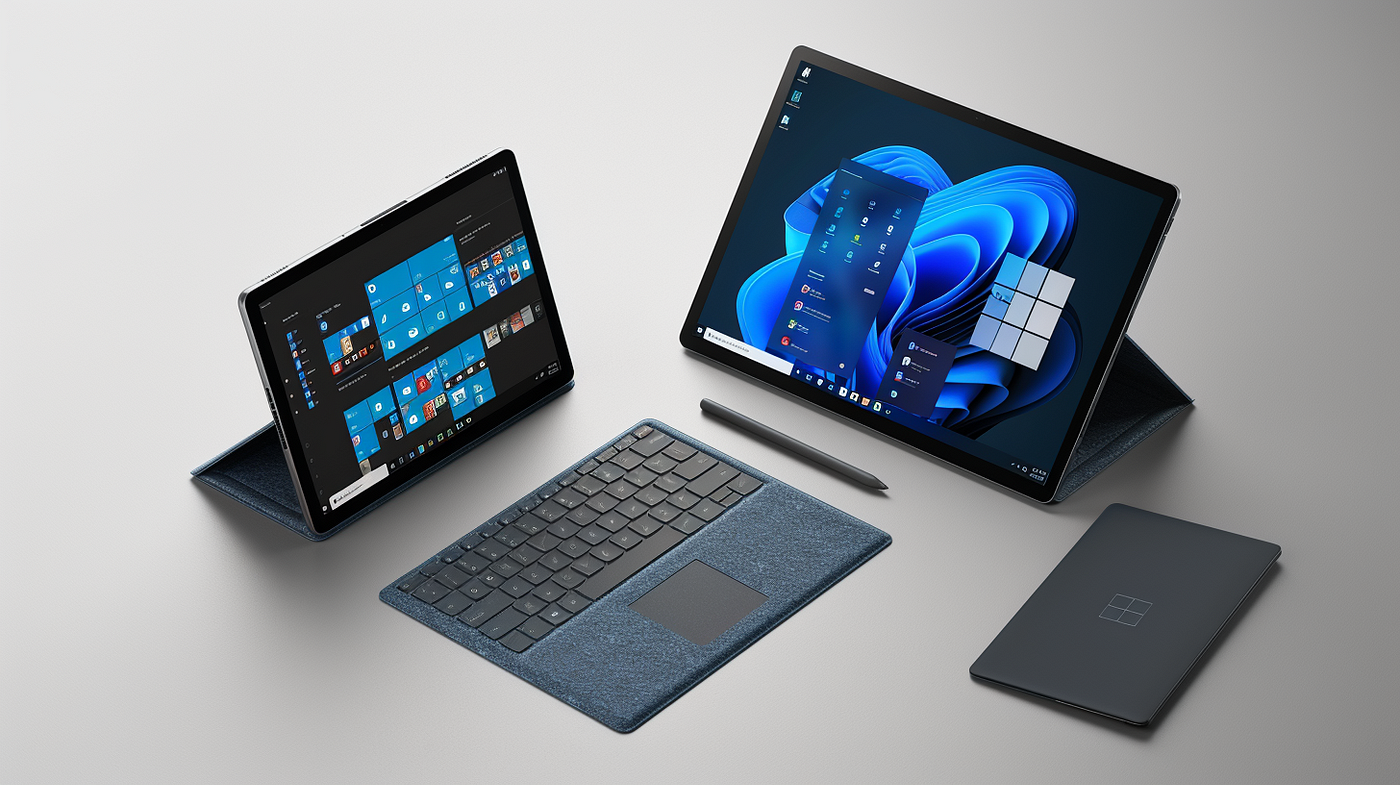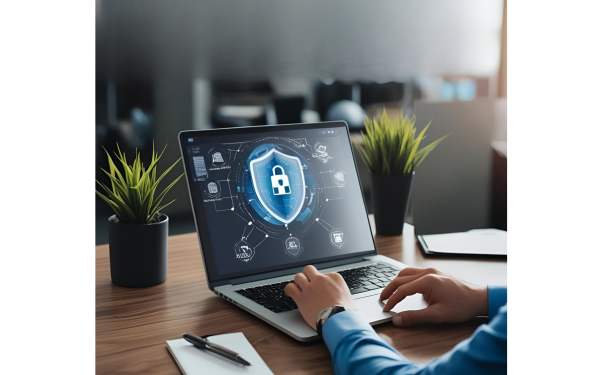 Google Ads Done Right – More Clicks, Less Waste!
Google Ads Done Right – More Clicks, Less Waste!
The Ultimate Guide to BYOD Management Software in 2025
Written by James Parker » Updated on: June 17th, 2025

A cornerstone of modern business strategy is "Bring Your Own Device" (BYOD), a trend that is rapidly evolving in today's rapidly evolving digital landscape. As companies embrace the flexibility and cost-effectiveness of BYOD, effective management of these devices becomes crucial. This comprehensive guide explores the latest developments in BYOD management software, dives into the nuances of how to manage BYOD devices effectively, and explains the key differences between EMM and MDM in 2025.
The Rise of BYOD in the Modern Workplace
The BYOD movement has transformed the traditional office setup into a dynamic, flexible work environment. Employees now frequently use their personal smartphones, tablets, and laptops for work, resulting in increased productivity, job satisfaction, and overall operational efficiency. However, this shift also introduces new challenges in security, data privacy, and IT administration. To meet these challenges, businesses are increasingly relying on specialized BYOD management software designed to secure and streamline the integration of personal devices into corporate ecosystems.
What is BYOD Management Software?
BYOD management software refers to a suite of tools that enables organizations to monitor, secure, and manage employees’ personal devices. These solutions ensure that corporate data is protected while offering employees the freedom to use their own devices. Key features typically include:
• Security Enforcement: Implements robust security policies such as encryption, remote wipe, and multi-factor authentication to protect sensitive data.
• Application Management: Controls the installation and usage of business applications, ensuring that only approved software is used on personal devices.
• Device Monitoring: Offers real-time monitoring and management of devices to detect and remediate any security threats.
• Compliance Assurance: Helps maintain regulatory compliance by enforcing security policies and ensuring data protection protocols are followed.
• User-Friendly Interface: Provides a seamless experience for both IT administrators and employees, balancing usability with stringent security measures.
With these capabilities, BYOD management software is essential for companies looking to harness the benefits of BYOD while minimizing risks.
Why Businesses Need BYOD Management Software in 2025
Enhancing Security and Compliance
Security is the foremost concern for any organization implementing a BYOD strategy. As cyber threats become more complex, traditional security measures are no longer sufficient. BYOD management software offers advanced threat detection and incident response capabilities that are critical for safeguarding corporate data. With features like remote lockout and data wipe, these tools can quickly respond to breaches and prevent potential losses.
Moreover, compliance with industry standards and government regulations is non-negotiable. BYOD management platforms help organizations stay compliant with regulations such as GDPR, HIPAA, and CCPA by enforcing data protection policies and providing audit trails.
Cost Efficiency and Scalability
Investing in BYOD management software can significantly reduce IT expenses. Companies no longer need to purchase and maintain a fleet of corporate devices, as employees use their own gadgets. This not only lowers hardware costs but also reduces the burden on IT departments. In addition, as businesses scale, the software can easily adapt to manage a growing number of devices without compromising security or efficiency.
Boosting Employee Productivity and Satisfaction
Employees appreciate the flexibility to use devices they are comfortable with, which can lead to increased productivity and job satisfaction. BYOD management software supports a flexible work environment, allowing seamless integration of personal and professional data. This balance fosters a more engaged workforce while ensuring that critical business information remains secure.
Key Features to Look for in a BYOD Management Solution
When selecting BYOD management software, there are several crucial features to consider. Here’s what businesses should prioritize:
1. Comprehensive Security Measures
• Encryption and Authentication: Ensure that all data transmitted and stored on personal devices is encrypted. Multi-factor authentication (MFA) should be standard to verify user identities.
• Remote Management: The ability to remotely monitor, lock, or wipe devices in case of loss or theft is vital.
• Malware Protection: Integrated antivirus and malware detection capabilities help prevent infections and unauthorized access.
2. Intuitive User Interface and Experience
A user-friendly interface is essential for both IT administrators and employees. The software should offer easy navigation, clear dashboards, and straightforward reporting tools. A seamless user experience minimizes the learning curve and ensures consistent adherence to security policies.
3. Scalability and Flexibility
As organizations grow, the BYOD management solution must scale with them. Look for software that can handle an increasing number of devices and adapt to evolving technological landscapes without compromising on performance.
4. Integration with Existing Systems
Compatibility with existing IT infrastructure is a must. The best BYOD management software integrates smoothly with current enterprise systems, such as cloud services, email platforms, and collaboration tools. This integration ensures that security protocols and data management processes are maintained consistently across the organization.
5. Robust Reporting and Analytics
Effective reporting tools help IT teams monitor device usage, identify potential security risks, and ensure compliance. Detailed analytics provide insights into device performance, usage patterns, and security incidents, enabling proactive management and decision-making.
How to Manage BYOD Devices Effectively
Managing BYOD devices requires a strategic approach that balances employee flexibility with robust security measures. When considering how to manage BYOD devices, organizations must implement clear policies, enforce security protocols, and provide employee training to mitigate risks. Here are some practical steps to ensure effective management:
Develop a Clear BYOD Policy
Before implementing any software solution, it’s essential to establish a clear BYOD policy. This document should outline:
• Acceptable Use: Define what is considered appropriate use of personal devices for work.
• Security Requirements: Specify the security measures employees must follow, such as password protection, encryption, and regular updates.
• Data Ownership and Privacy: Clarify who owns the data stored on personal devices and how it will be protected.
• Compliance: Ensure the policy adheres to relevant legal and regulatory standards.
A comprehensive BYOD policy sets clear expectations and reduces the risk of security breaches.
Invest in Training and Support
Employees must be well-informed about the risks associated with BYOD and the importance of adhering to security protocols. Regular training sessions can educate staff on best practices for managing personal devices in a corporate environment. Additionally, IT support should be readily available to assist employees with any issues related to device management or security.
Monitor and Update Regularly
The digital landscape is continuously changing, and so are the threats targeting BYOD devices. Regularly update the management software to include the latest security patches and features. Continuous monitoring is crucial—use real-time analytics and automated alerts to quickly identify and address any potential issues.
Leverage Automation
Modern BYOD management software often includes automation features that reduce the administrative burden on IT departments. Automated device enrollment, policy enforcement, and security updates can save time and ensure consistent adherence to security protocols. Automation also minimizes human error, which is a significant factor in security breaches.
Create a Feedback Loop
Encourage employees to provide feedback on the BYOD management process. Their insights can help identify areas for improvement, ensuring that the system is both effective and user-friendly. Regularly reviewing and refining the BYOD policy and management practices will lead to continuous improvement in security and productivity.
EMM vs MDM: Understanding the Differences
A common point of confusion for many IT professionals is the difference between EMM vs MDM. Although both aim to secure and manage mobile devices, they differ significantly in scope and functionality.
Mobile Device Management
MDM primarily focuses on managing and securing mobile devices. It involves:
• Device Enrollment: Registering devices into a management system.
• Configuration Management: Applying security policies and settings to each device.
• Remote Control: Enabling IT teams to manage devices remotely, including lock, wipe, and troubleshooting.
• Application Management: Controlling the apps that can be installed and used on a device.
MDM is highly effective for environments where the primary concern is controlling the hardware and ensuring the device’s integrity.
Enterprise Mobility Management
EMM goes beyond traditional MDM by integrating additional layers of management, including:
• Content Management: Securely managing and distributing corporate documents and data.
• Identity Management: Ensuring that only authorized users have access to sensitive information.
• Application Management: Overseeing app deployment and usage across various devices.
• Security Management: Implementing comprehensive security measures that extend to both device and data management.
While MDM focuses on the device itself, EMM provides a holistic approach by managing not only the hardware but also the software, content, and overall security of the enterprise’s mobile ecosystem. For businesses with complex mobility needs, EMM offers a more robust and integrated solution.
BYOD management software has emerged as a critical component in today’s modern workplace. As businesses continue to adopt BYOD strategies, understanding how to manage BYOD devices effectively—and the differences between EMM and MDM—will be key to safeguarding sensitive data and ensuring compliance. The future promises even more advanced solutions, with AI-driven insights, zero trust security, and seamless cloud integration redefining the standards of mobile device management.
In 2025, companies that invest in comprehensive BYOD management solutions will not only enhance their security posture but also foster a flexible, productive, and satisfied workforce. By staying informed about the latest trends and implementing best practices, organizations can navigate the complexities of the BYOD landscape and leverage the benefits of this dynamic approach to work.
Embrace the future of mobile device management, invest in the right tools, and transform your business into a secure, agile, and innovation-driven enterprise. With the ultimate guide to BYOD management software at your fingertips, you’re well-equipped to meet the challenges and seize the opportunities of the digital age.
Note: IndiBlogHub features both user-submitted and editorial content. We do not verify third-party contributions. Read our Disclaimer and Privacy Policyfor details.
Copyright © 2019-2025 IndiBlogHub.com. All rights reserved. Hosted on DigitalOcean for fast, reliable performance.










